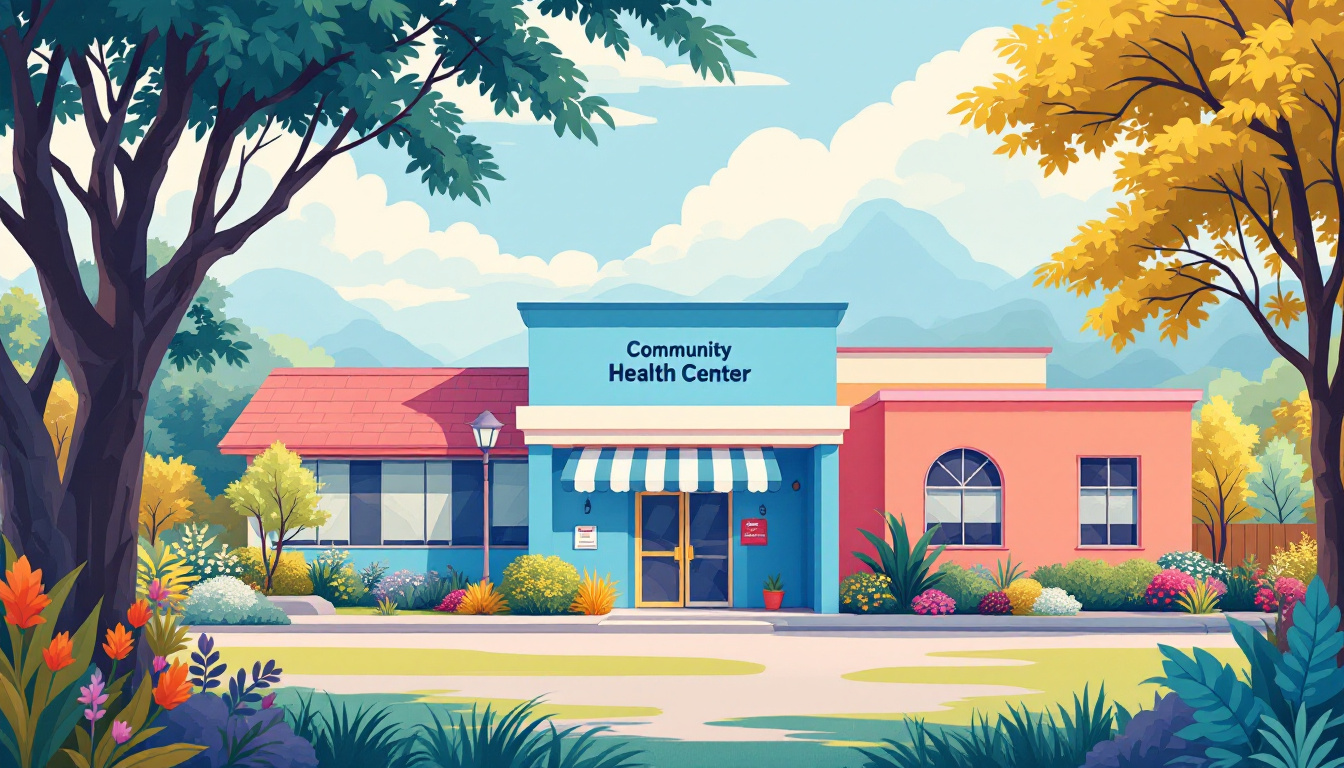The Differences Between Short-Term Rehabilitation and Long-Term Care
April 22, 2025
Understanding Care Options for Recovery and Support


Navigating Care Choices: A Guide to Short-Term and Long-Term Services
As individuals age or recover from surgeries, injuries, or illnesses, selecting the appropriate care setting becomes crucial for optimal recovery and quality of life. Short-term rehabilitation and long-term care represent two distinct approaches tailored to different health needs, durations, and personal circumstances. This article explores their definitions, features, patient conditions, costs, and how to determine the best option for yourself or loved ones.
Defining Short-Term Rehabilitation and Long-Term Care

What is the definition and purpose of short-term rehabilitation and long-term care?
Short-term rehabilitation is a temporary, goal-focused type of care designed to help patients recover from illnesses, injuries, or surgeries within a span of a few weeks. It primarily aims to restore functionality and independence through therapies such as physical, occupational, and speech therapy. These services are provided in specialized facilities or settings, often following a hospital stay, with a focus on safe recovery and preparing the individual to return home or move to a lower level of care.
Conversely, long-term care provides ongoing assistance for individuals dealing with chronic conditions, disabilities, or cognitive impairments. It is suited for those whose health needs exceed what they can manage independently or with family support. Long-term care may involve 24-hour skilled nursing, personal assistance with daily activities like bathing or dressing, and continuous medical supervision. Typically lasting months or years, this care is aimed at maintaining or improving overall quality of life, comfort, and health over the longer term.
In summary, short-term rehabilitation is geared toward temporary recovery with the goal of regaining independence quickly, while long-term care addresses persistent health challenges, ensuring ongoing support and safety for individuals with ongoing needs.
Features, Services, and Facilities in Different Care Settings

What are the typical features, services, and facilities associated with short-term rehabilitation and long-term care?
Short-term rehabilitation centers are designed for rapid recovery after medical events like surgery, injury, or illness. They focus on goal-oriented therapies such as physical, occupational, and speech therapy, typically lasting a few weeks—usually around 15-30 days. Patients in these facilities receive skilled nursing services, wound care, and assistance with daily activities like dressing, bathing, and mobility, all aimed at restoring independence. These settings are well-equipped with medical equipment and often have on-site therapy facilities. Their primary goal is to help individuals regain strength, reduce complications, and transition safely back to home or a lower level of care.
In contrast, long-term care facilities cater to individuals with ongoing health needs. These include nursing homes and assisted living communities that support seniors or those with chronic, degenerative, or disabling conditions such as Alzheimer’s, Parkinson’s, or disabilities stemming from strokes. Long-term care emphasizes continuous medical supervision, assistance with activities of daily living (ADLs), and personalized care plans. These settings often feature social and recreational amenities like activity rooms, salons, transportation services, and emotional support programs, which help improve or maintain residents’ quality of life. The care in these environments is ongoing, with stays that can extend indefinitely, and they are designed to adapt to changing health needs.
The facilities and services offered in both types vary according to specific needs. Short-term rehabilitation focuses on recovery and returning to independence, while long-term care emphasizes ongoing support, health management, and lifestyle quality.
| Aspect | Short-term Rehabilitation | Long-term Care | Details |
|---|---|---|---|
| Duration | Days to several weeks | Months to years | Usually from a few days to a month; indefinite support |
| Goals | Recovery, regaining independence | Maintaining health, ongoing assistance | Focuses on rehabilitation vs. ongoing support |
| Services | Physical, occupational, speech therapy; wound care; skilled nursing | Continuous nursing; personal care; chronic condition management | Therapy and care specifics vary by need |
| Facilities | Rehabilitation centers, skilled nursing facilities | Nursing homes, assisted living communities | Different settings tailored to care needs |
| Amenities | Therapy gyms, medical equipment, recovery programs | Social activities, transportation, emotional support | Enhances quality of life during long-term stay |
Patient Conditions and Medical Complexities

What patient conditions and medical complexities are involved in short-term rehabilitation and long-term care?
Short-term rehabilitation patients are typically recovering from acute health events such as surgeries—including joint or cardiac procedures—strokes, or injuries like fractures. Their stay usually lasts a few weeks and involves intensive, goal-oriented therapies like physical, occupational, and speech therapy. These patients often present with complex medical needs, requiring careful management of medications, wound care, and mobility support to restore function and independence swiftly.
In contrast, long-term care caters to individuals with chronic, often progressive conditions. Common illnesses include Alzheimer’s disease, Parkinson’s, heart failure, and kidney disease. These residents usually live in care facilities for extended periods, sometimes years, with ongoing needs for 24-hour nursing supervision and assistance with activities of daily living such as bathing, dressing, and medication management.
Residents in long-term settings often have multiple health issues, high levels of co-morbidities, and functional impairments that increase risks like falls, infections, and deterioration of health. The emphasis in long-term care is on maintaining quality of life, safety, and dignity, addressing complex medical and personal needs that cannot be managed at home.
While short-term rehab is focused on recovery and readiness for discharge, long-term care provides continuous, comprehensive medical support for individuals whose health conditions are stable yet require persistent assistance.
| Care Type | Patient Conditions | Medical Complexities | Duration |
|---|---|---|---|
| Short-term rehab | Post-surgical, stroke, injury | Acute illness management, wound care, mobility issues | Days to a few weeks |
| Long-term care | Alzheimer’s, Parkinson’s, disabilities | Chronic illness management, multiple co-morbidities, safety risks | Months to years |
Understanding these differences helps in planning appropriate care tailored to patient needs and medical complexities.
Costs, Benefits, and Suitability of Care Options

How do the costs, benefits, and suitability differ between short-term rehabilitation and long-term care?
Short-term rehabilitation and long-term care serve different needs and come with distinct costs and benefits.
Short-term rehabilitation typically lasts a few weeks to a few months, focusing on helping patients recover from specific health events like surgery, injury, or illness. The costs often depend on the setting; in-home care might range from $20 to $40 per hour, while skilled nursing facilities or rehab centers can cost from $200 to $1500 daily. These services are often covered by Medicare, Medicaid, or private insurance, especially when related to post-acute recovery.
Benefits of short-term care include targeted therapies such as physical, occupational, and speech therapy, aimed at restoring physical function and independence. It offers a structured and goal-oriented approach to recovery, with most patients expected to return home or to a lower care level afterward.
Suitability is ideal for individuals recovering from surgery, stroke, or injury that is expected to improve. It provides intensive, skilled medical and rehabilitative services tailored to short-term needs.
In contrast, long-term care involves ongoing assistance for individuals with chronic conditions or disabilities that cannot be cured or fully reversed. The costs are generally higher, with in-home care averaging $20 to $40 per hour, but nursing homes or assisted living facilities can cost from $3,000 to over $7,500 monthly. Long-term care often requires continuous medical supervision, personal care, and support with daily activities.
Benefits of long-term care include comprehensive, personalized support, social activities, emotional and mental health resources, and a safe environment conducive to long-term well-being. It ensures ongoing management of complex conditions like Alzheimer’s, Parkinson’s, or severe disabilities.
Suitability is for those with chronic or progressive health issues, where recovery is unlikely, and ongoing support is needed. It offers a stable environment tailored to maintaining quality of life over an extended period.
| Aspect | Short-term Rehabilitation | Long-term Care | Explanation |
|---|---|---|---|
| Duration | Several weeks or months | Months or years, indefinite | Short-term is temporary; long-term is ongoing |
| Cost | $200–$1500 daily; covered by insurance | $3,000–$7,500+ monthly; often private pay or Medicaid | Costs vary based on setting and duration |
| Goals | Recover independence, restore function | Manage chronic conditions, support daily living | Different main objectives |
| Suitable for | Post-surgery, injuries, acute illnesses | Chronic illnesses, disabilities, aging | Based on health needs |
| Services | Therapy, skilled nursing, wound care | Medical supervision, personal care, social support | Types of care provided |
Understanding these differences helps individuals and families choose appropriate care options tailored to their health needs, financial situation, and personal preferences.
Guidance for Making Care Decisions
 When deciding on the most suitable care options, individuals should carefully evaluate their health status, recovery outlook, and long-term needs. For temporary recovery, short-term care and rehabilitation services focus on restoring function and independence within weeks or months. Conversely, long-term care suits those with chronic or progressive conditions requiring ongoing assistance and medical management.
When deciding on the most suitable care options, individuals should carefully evaluate their health status, recovery outlook, and long-term needs. For temporary recovery, short-term care and rehabilitation services focus on restoring function and independence within weeks or months. Conversely, long-term care suits those with chronic or progressive conditions requiring ongoing assistance and medical management.
Consultation with healthcare professionals such as physicians, therapists, and social workers is essential. They can offer personalized advice tailored to the individual's specific medical condition and recovery goals. This guidance helps determine whether rehab or ongoing support in a long-term setting is most appropriate.
Financial considerations are also pivotal. Evaluating coverage options like Medicare, Medicaid, or private insurance can influence choices. The level of required independence, personal preferences, and quality of life expectations should all factor into the decision-making process.
Engaging family members or caregivers in discussions ensures that the care plan aligns with the person's needs and preferences. Planning ahead, maintaining open communication with healthcare teams, and reassessing needs regularly help in making informed and adaptable care decisions.
Choosing the Right Care for Your Needs
Understanding the fundamental differences between short-term rehabilitation and long-term care enables individuals and families to make informed choices that best support recovery, independence, and quality of life. Recognizing the specific medical conditions, durations, and services associated with each care type allows for tailored decisions that meet both current health needs and future considerations. Whether focusing on temporary recovery or ongoing support, exploring available options, consulting healthcare professionals, and considering personal circumstances are essential steps toward effective and compassionate care planning.
References
- Difference Between Short-Term Care and Long-Term Care
- The Difference Between Short-Term and Long-Term Care
- What's the Difference Between Long-Term Care and Short ... - MOAA
- Short-Term vs Long-Term Skilled Nursing Care
- What Is the Difference Between Skilled Nursing and ... - WesleyLife
- Short-Term Care vs Long-Term Care: Which Should You Choose?
- Short-Term versus Long-Term Care: What's the Difference?
























































































.jpeg)











































































































































































































.avif)























































.jpeg)

































































.jpeg)














.jpg)









































.jpeg)









































































.avif)




.avif)

















































.avif)









































































































































































